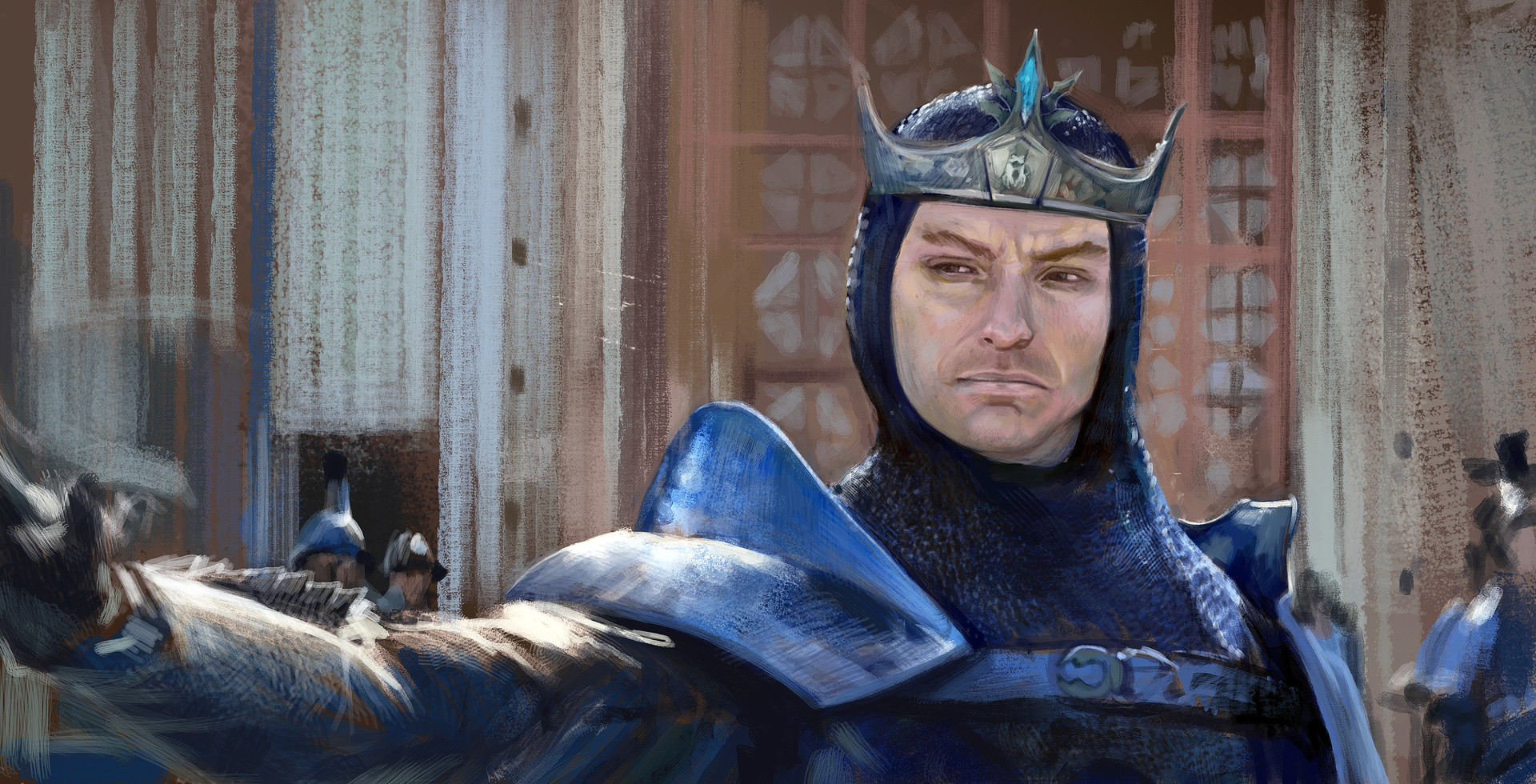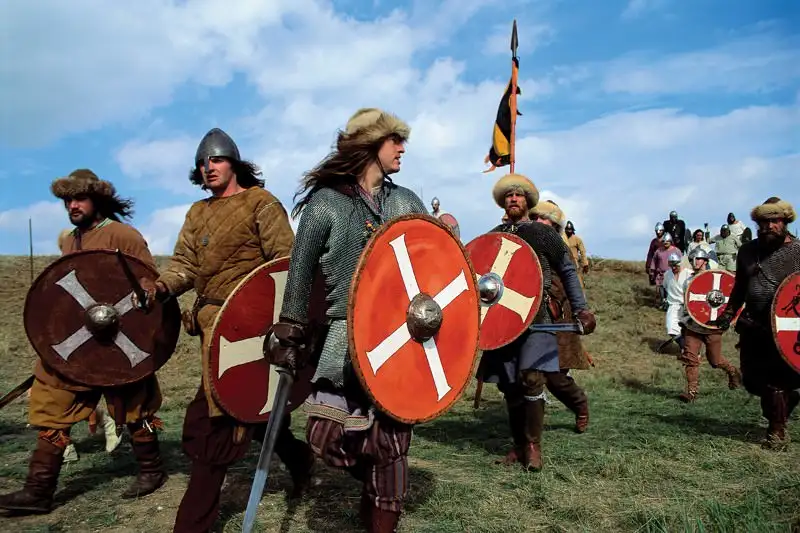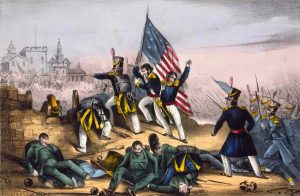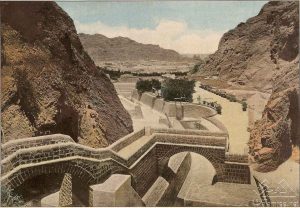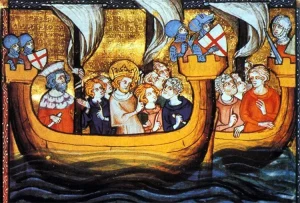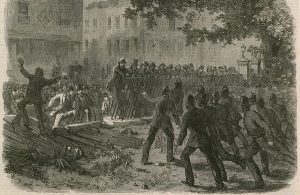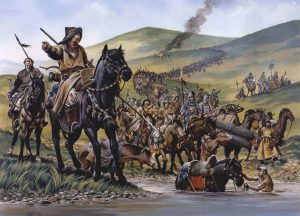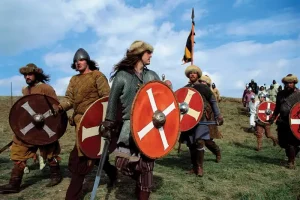When the Roman legions marched away in 410 CE, they left the island of Britain in a vacuum of authority. Villa walls cracked without imperial tax money, local town councils bickered over militia duty, and Pictish warbands began slipping south across Hadrian’s Wall.
In this drifting moment appears a shadowy figure whom early chroniclers called Vortigern—Gwrtheyrn in Brittonic, “high king” or perhaps simply “over-chief.” Our earliest witness, the monk Gildas (writing c. 540), blames him for opening the island’s gates to Germanic mercenaries; later writers paint him as coward, traitor, or tragic scapegoat. Yet the very controversy signals real power: only a ruler who mattered could attract so much ink.

🤴 Vortigern’s Rise to High Kingship
Sources agree on little except that Vortigern emerged from the western marches—perhaps Powys or the Severn valley—where Romanized estates rubbed shoulders with Celtic hillforts. By the 430s he had maneuvered himself into an island-wide primacy, winning the title “superbus tyrannus” in one continental chronicle. We glimpse him presiding at councils, doling out subsidies from old Roman tax hoards, and balancing rival ambitions: Christian bishops demanding royal patronage, pagan tribal chiefs demanding loot, Latin-speaking aristocrats demanding safe roads to market.
His early policies—fortifying former legion camps, minting pseudo-imperial coin, marrying his daughters into rival dynasties—suggest a statesman trying to hold a mosaic together long enough to become something new: a post-Roman British kingdom. But mosaic tiles can crack under pressure, and the fiercest pressure came from the north.

⚔️ The Saxon Gamble
Some time in the 440s, a desperate council at Vortigern’s side weighed the cost of frontier defense against the Picts and Scots. The decision that followed became legend: the king invited two Jutish brothers—Hengist and Horsa—to bring three warships of foederati warriors in exchange for land and grain. Bede, the Anglo-Saxon Chronicle, and the Historia Brittonum all tell variants of the tale; every version ends with the newcomers granted the isle of Thanet and the right to call more kinsmen across the North Sea. citeturn0search2
At first the bargain worked. Saxon shield-walls blunted Pictish raids; merchants recorded safer roads; Vortigern toasted his Jutish captains with imported Rhenish wine. Yet mercenaries rarely stay cheap. When payments lagged—some say after a poor harvest, others after royal coffers bled dry—the Saxons mutinied, pillaging Kentish farmsteads and seizing hostages at a peace banquet. Christian chroniclers would frame the episode as divine punishment for trusting heathens; modern scholars call it a predictable wage dispute that ignited ethnic war.

🐉 Dinas Emrys and the Dragons Beneath the Hill
While Saxon fires spread, legend says Vortigern fled west to Snowdonia, seeking a mountain stronghold the texts call Dinas Emrys. Here myth and memory entwine: masons, unable to lay foundations, reported nightly collapses. Druids advised finding a child with no earthly father; the boy—later poets named him Merlin—revealed two dragons fighting beneath the hill, one red, one white. Their struggle, he said, foretold Briton and Saxon locked in endless war.
Archaeologists have indeed traced 5th-century ramparts on the rocky hill above Beddgelert, though no dragon bones lie inside. Yet the story matters less for bricks than for symbolism: it casts Vortigern as a ruler whose fortunes literally crumbled because he ignored deeper tremors shaking the land. In the dragon myth the king is not evil so much as outmatched by forces he helped unleash. citeturn0search0
🛡️ British Resistance
Opposition coalesced on two fronts. The first was spiritual. In 429 CE, alarmed Gallic bishops sent St Germanus of Auxerre across the Channel to combat what they termed Pelagian heresy in Britain. Germanus preached, healed, and—according to his hagiographer—rallied a peasant levy that defeated Saxon pirates with a thunderous shouted “Alleluia.” The episode may compress several skirmishes, but it hints that ecclesiastical networks could mobilize where royal command faltered.
The second front was military-political. Around 450 a Romano-British war-leader named Ambrosius Aurelianus—“last of the Romans,” Gildas calls him—rose from the western heartlands to challenge Saxon advances. Ambrosius’ power base, perhaps centered on modern Gloucester, drew refugees from sacked towns and veterans of the old legions. To later chroniclers he becomes Vortigern’s nemesis, the red dragon to the superbus tyrannus. In some tales Ambrosius even seizes Dinas Emrys after the prophetic boy foretells his victory. citeturn0search1
🔥 Collapse, Exile, or Firestorm?
How Vortigern’s story ends depends on which manuscript a reader trusts. The Historia Brittonum claims he was cornered in a timber tower by Ambrosius’ forces; lightning struck and the whole fortress burned, consuming king and kin alike. Geoffrey of Monmouth, writing centuries later, adds baroque detail: poison, treachery, even a Saxon bride named Rowena who dances the king into drunken compliance before stabbing allies in the back. Welsh genealogies, however, let him retire quietly to the region later called Dyfed, fathering princes who would found minor kingdoms in Wales.
Behind the drama lies a simple demographic reality: by 470 Germanic settlers controlled most of the lowland east and the Thames valley; whatever authority Vortigern once wielded had fractured into regional chieftaincies, each scrambling to survive. Whether by flame, exile, or obscurity, the name Vortigern faded even as the consequences of his policy hardened into Saxon earldoms.

📜 LEARN THE PAST
📜 Traitor, Victim, or Necessary Evil?
Gildas’ jeremiad gives us the first verdict: Vortigern as the foolish king whose lust—for a Saxon woman, for foreign troops, for his own throne—brought ruin on Christian Britain. The anonymous compiler of the Historia Brittonum (c. 830) doubles down, adding incest, false oaths, and devilish counselors. Yet the same text lists Vortigern’s sons as brave defenders against later Saxon waves, hinting at a more nuanced oral tradition.
In the 12th century, Geoffrey of Monmouth’s blockbuster History of the Kings of Britain weaves Vortigern into Arthurian prelude: Ambrosius and Uther Pendragon avenge Britain by toppling the tyrant, paving the way for King Arthur’s golden age. Geoffrey’s audience—Norman conquerors seeking legitimacy—found the tale a useful mirror: a warning against native weakness and a justification for strong centralized rule.
Twentieth-century historians, armed with archaeology, numismatics, and place-name studies, view Vortigern less as singular villain than as a crisis manager whose short-term fix had catastrophic long-term costs. The Pictish raids were real, the Romano-British militias threadbare, and hiring Germanic federates followed a Roman precedent used on the Rhine and Danube. Vortigern’s error was not strategy but control: once land grants created a Saxon economic heartland, levies of grain and manpower slipped beyond royal reach.

💰 Governing on the Edge
Although Britain’s formal mints closed with Rome, stray copper and silver imitations bearing clipped imperial busts—sometimes with blundered legends like VRTIGER—suggest a local coinage experiment under his watch. Recent digs at Wroxeter show a large timber hall erected atop Roman baths around mid-5th century, stocked with Mediterranean amphorae. Perhaps this was Vortigern’s court, still importing Spanish olive oil even as Saxon barns dotted Kent.
Liturgically, bishops continued to convene synods; one charter fragment from Llandaff hints that a “King Vortigern” confirmed church lands “in eternal peace.” If genuine, the text portrays a monarch courting ecclesiastical support, not spurning it. Yet such patronage could not repair the spiraling manpower drain. As young Britons fled war zones, Saxon settlers filled the vacuum, shifting language, law, and land tenure east of Offa’s Dyke almost overnight in historical terms.
🌟 A Name Etched in Cautionary Stone
Whether villain or pragmatist, Vortigern became the pivot figure of Britain’s most dramatic cultural shift: from Latin and Brittonic to Old English, from villa economy to village-kingdom patchwork, from imperial province to competing petty realms that would eventually give birth to England, Wales, and Scotland. His invitation to Hengist stands as Europe’s textbook case of mercenaries turned conquerors, echoed centuries later when Varangian guards seized thrones in Rus’, or when condottieri carved duchies out of Renaissance Italy.
In Welsh folklore he survives as a caution: children who build castles on shaky ground are still told to “mind the dragons under Vortigern’s hill.” Academics debate his historicity; novelists seize on his tragedy; television dramatists reimagine him as schemer, patriarch, or puppet of love. The persistence of his story, more than any single date or deed, proves his enduring grip on Britain’s imagination.
🧭 Conclusion
History often judges leaders not by the enemies they defeat but by the allies they choose. Vortigern’s bargain with Hengist solved a winter crisis and sparked a century-long conflagration. He is condemned for shortsightedness, yet he acted within a strategic vocabulary Rome itself had honed. Perhaps his true failure lay in underestimating the speed at which hired swords could forge their own destiny.
To study Vortigern is to confront the brittle thresholds between collaboration and conquest, migration and invasion, emergency measure and epochal turning point. Standing among the wind-scoured ruins of coastal forts or the misted ramparts of Dinas Emrys, one can still imagine the echo of those first Saxon boots on shingle—an echo that, once invited, never quite left Britain’s shore.

